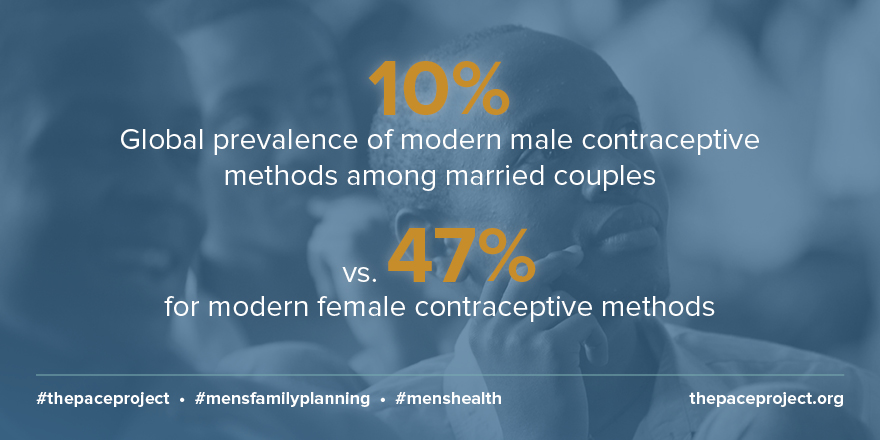
Overall use of contraceptives has increased globally, but use of modern male methods (condoms and vasectomies) remains low.
Achieving the Sustainable Development Goal (SDGs) target of universal access to reproductive health by 2030 will be difficult without men’s participation.
Expanding family planning outreach and services to include men across the life course may help normalize the concept of men as contraceptive users. It can foster shared responsibility for contraceptive use among couples, open the door to more gender-equitable relationships, and increase the use of male contraceptive methods. In turn, programs can better meet the contraceptive and family planning needs of men and women, helping countries achieve family planning and development goals.
Overall use of contraceptives has increased globally, but use of modern male methods (condoms and vasectomies) remains low. Achieving the Sustainable Development Goal (SDGs) target of universal access to reproductive health by 2030 will be difficult without men’s participation.
Expanding family planning outreach and services to include men across the life course may help normalize the concept of men as contraceptive users. It can foster shared responsibility for contraceptive use among couples, open the door to more gender-equitable relationships, and increase the use of male contraceptive methods. In turn, programs can better meet the contraceptive and family planning needs of men and women, helping countries achieve family planning and development goals.
This web feature—produced through the USAID-funded PACE project—presents a snapshot of modern male-controlled and cooperative contraceptive method use around the world and highlights data that identify opportunities to engage more adolescent boys and men as contraceptive users and family planning clients.

